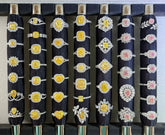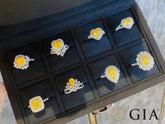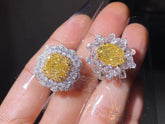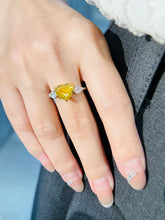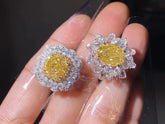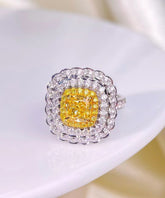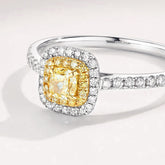A Guide to Understanding Lab-Grown Diamonds and Natural Diamonds

Diamonds are extremely hard substances, resistant to abrasion, and are one of the most precious gemstones in human history. They symbolize unwavering love, sparkling brightly like the radiance of love illuminating the heart.
Natural Diamonds:
Natural in essence, originating from the gifts of nature and formed over 3 billion years, they possess a certain natural scarcity. They are classified as non-renewable resources. Due to their rarity and natural characteristics, they are regarded as symbols of love.
Lab-Grown Diamonds
Lab-Grown Diamonds are synthesized by researchers mimicking the natural diamond crystallization process and conditions artificially. They are produced in large quantities within 1-2 weeks using industrial technology, with the majority of production coming from China and India.
Diamond Formation Process:
Natural diamonds originate as gifts from nature, formed over 3 billion years, possessing a certain natural scarcity and classified as non-renewable resources due to their rarity and natural characteristics.

Lab-Grown diamonds are produced by simulating the natural diamond growth environment. Jewelry-grade cultivated diamonds have only begun to enter consumers' lives in recent years, following the maturation of cultivation technology over 70 years.

Differences between Lab-Grown Diamonds and Natural Diamonds?
Lab-Grown diamonds and natural diamonds are both genuine diamonds.
They are akin to ice in a refrigerator and ice in nature; apart from their growth environments, their composition, physical properties, and chemical properties are entirely identical. Even experts cannot distinguish between Lab-Grown diamonds and natural diamonds with the naked eye; it requires specialized instruments from testing agencies to differentiate them.
Natural Diamond
Composition Chemical Composition: Carbon
Mohs Hardness: 10
Refractive Index: 2.417~2.419
Lab-Grown Diamonds
Composition Chemical Composition: Carbon
Mohs Hardness: 10
Refractive Index: 2.417~2.419
Lab-Grown diamonds have professional evaluation standards, just like natural diamonds, which are measured using the universally recognized '4C criteria' in the diamond industry. These criteria include size, color, clarity, and cut, all of which can meet the highest standards.

Since 2018, the identity of Lab-Grown diamonds has been officially recognized:
In July 2018, the Federal Trade Commission (FTC) of the United States revised the definition of diamonds, removing the term 'natural' and categorizing both natural diamonds and laboratory-grown diamonds as diamonds.
In 2019, global jewelry industry organizations such as the Eurasian Economic Union, Gemological Institute of America, World Jewelry Confederation, and China Gems & Jewelry Industry Association successively recognized 'lab-grown Diamonds' as diamonds.
Following this, the three major international authoritative diamond grading institutions, GIA, IGI, and HRD, also endorsed Lab-Grown Diamonds, issuing certification for them. Since 2018, the identity of Lab-Grown diamonds has gained authoritative recognition.

The advantages of natural diamonds lie in their long history, rarity, collectible value, and heritage significance. With overall supply unable to meet demand, their prices have remained historically high. They possess natural scarcity, thus offering certain preservation and appreciation potential.
Lab-Grown Diamonds, on the other hand, offer high cost-effectiveness, a wider range of colors, environmental friendliness, and suitability for daily wear. The greatest advantage of cultivated diamonds is their low price.
Purchasing Lab-Grown Diamonds
Natural diamonds and Lab-Grown diamonds do not have absolute pros and cons. It's simply a matter of personal preference and budget. The positioning of the two differs in the minds of consumers.
Choosing Custom Diamond Shapes

Selecting Custom Diamond Sizes

Exclusive Customization of Diamond Jewelry
Three Steps to Customizing Diamond Accessories
-
Establishing a Budget Choose high cost-effectiveness within a reasonable budget range.
-
Determining Diamond Parameters For Lab-Grown Diamonds, it is advisable to choose D color, VVS clarity, and 3EX cut.
-
Selecting Jewelry Styles Styles can be determined based on personal preferences or can be exclusively designed by a designer.
Everyone can choose diamonds that suit their needs and preferences. Whether natural or cultivated, diamonds are beautiful, sparkling, and precious materials that deserve our appreciation and admiration.
